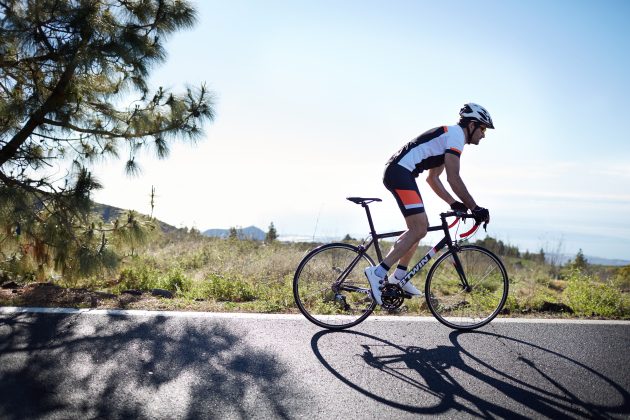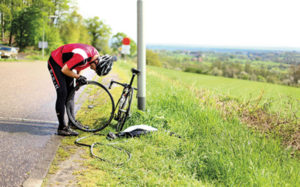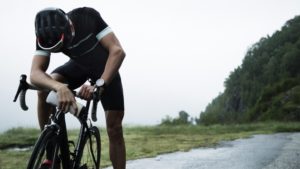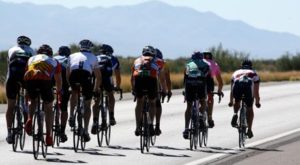Whether you’re getting into training for the first time, or just getting back into it after a layoff (seasonal or otherwise), there are some mistakes most cyclists make. We don’t blame you, when you’re getting back into things it’s all so exciting that caution sometimes goes out the door. However, some little steps will set you up for not only a better ride, but a more successful season- no matter what your goals are.

6 Beginning of the Season Mistakes Most Cyclists Make
Not Checking Equipment
The sun’s out, and you’re in a panic to get out on the road. Motivation is heightened at the start of the season, which is great, but it can lead to a lack of preparation. You may head out the door in record time, but often times you’ll end up back at home with a sore body or a non-functional bike. Whether it’s a flat tire of a squeaky train train, these things can ruin training plans and even damper that motivation. The good news is, they are often avoidable!
- Do a quick bike check / tune up – Check your tire pressure, ride around the block to check brakes and gear function.
- Layer up – Early season riding can make for some unpredictable weather, so be sure to layer up with some quality clothing. Leg and arm sleeves and a light shell are great to include on every ride just in case!
Not Having a Plan
We all know that the key to becoming a stronger cyclist is to ride more, but proper training is slightly more complex than that. Having a plan of attack for your season will help you avoid burnout and wasted rides. Sticking to a few basic rules can help you avoid these common pitfalls.
- Measure your effort – Whether you use a heart rate monitor, power meter, or just check in with how you’re feeling, it’s important to be able to measure your effort in some way. You don’t want to go too hard right out of the gate, but you also don’t want to go too easy and never reap the benefits of high intensity training.
- Warm up – Always warm up at a moderate pace at the beginning of your ride.
- Include variety in your rides – It’s important to include both high intensity rides as well as long slow distances. The variety you can add to your training routine, the stronger you’ll be.
Not Fueling Properly
 Although cycling is a great way to lose weight, you’ll want to leave your diet at home. Under fueling your rides or eating the wrong food at the wrong time can halt your progress and make training a miserable experience. At the same time, over fueling and using a long ride as an excuse to each 3 cheeseburgers also isn’t great.
Although cycling is a great way to lose weight, you’ll want to leave your diet at home. Under fueling your rides or eating the wrong food at the wrong time can halt your progress and make training a miserable experience. At the same time, over fueling and using a long ride as an excuse to each 3 cheeseburgers also isn’t great.
- Don’t take your diet on your rides – If you have weight to lose, restricting calories and controlling macronutrient intake is important, but don’t aim to do that on your rides. Eating the right things before and during your ride is important to keep up energy levels.
- Manage your intake post ride – In the 30-60 minutes after a ride your insulin sensitivity is naturally elevated, making it a great time to consume carbohydrates and have them stored as glycogen in the muscles to fuel future workouts rather then as fat. This is also a good time to consume protein to stimulate muscle repair.
Not Using Group Rides Properly 
Riding in groups and the community feeling is one of the best parts of cycling. The ability to use the draft to increase your speed ,challenge yourself against others and embrace the social aspect of training can be a huge benefit. Group rides can improve your bike handling ability, push you to better fitness and even provide better safety on the road when done right. However when approached the wrong way, groups can do the opposite for a rider. The wrong group rides can be too fast, too easy, time inefficient and make riding more dangerous.
- Pick the right group – When first picking a group be conservative. If they advertise an average speed (eg 25-28kmh) you should be able to hold the low end of that range on your own without a huge effort. You can always push harder on an easier group ride, but if you overestimate your abilities you might find yourself pushing too hard or getting dropped.
- Focus on organization and safety – If your group ride is always leaving 20 minutes late, or don’t follow the rules of the road, then it’s probably not a great group to be a part of.
Worrying About What Everybody Else is Doing
If you find yourself focusing on what everybody else is doing, then you’re not going to figure out what’s best for you. It can easily make you doubt your progress and even damper your motivation. Stay focused on the big picture, and drown out all the noise.
- Stop scrolling – You don’t need to scroll through Strava or Instagram and see what everyone else is doing! If you do look to others for motivation, find someone with the same goals as you and recruit them as a training partner.